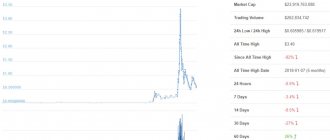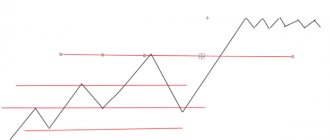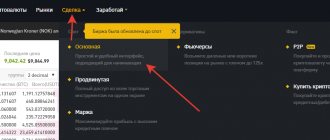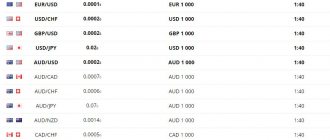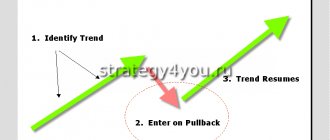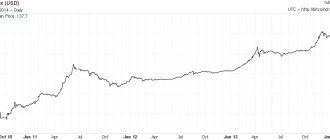People come to trading in different ways. Paul Tudor Jones became a trader by chance and was able to earn a fortune in excess of $5 billion. The secret to Jones's success lies in his unconditional self-belief and willingness to take risks. The story of an American trader is a great example of how a head on your shoulders and a little courage can achieve everything you dreamed of and even more.
Biography of Paul Tudor Jones
The future trader was born in 1954 into a wealthy family. The Joneses were well known in Tennessee: the boy's father owned a law practice and was also the publisher of The Daily News, a newspaper that the family had owned since 1886. It was assumed that the son would continue the family traditions.
Jones was educated in boys' schools. He spent his senior school years at the venerable institution, founded in 1893 with the goal of preparing students for admission to universities. The parents' choice paid off: the young man entered the University of Virginia, one of the best public educational institutions in the USA.
In the seventies, tuition fees at American universities were much more affordable than they are now. The future billionaire could earn the required amount by writing newspaper articles. The newspaper that accepted him as a staff member was the same The Daily News. Jones used the pseudonym Paul Eagle (“Eagle”).
In parallel with his studies at the university, Paul Tudor was involved in boxing, competing in the welterweight division. He was also a member of the Sigma Alpha Epsilon fraternity and acted as a bookmaker for it. In an interview, the businessman admitted with a laugh that during his university years he loved beer and games most of all, and he had no other real hobbies. He was soon to graduate with a degree in economics, but had no idea what he would do after graduation.
That all changed when a friend of Jones's mentioned that trading soybean futures could be incredibly profitable. The future trader was interested in this. That evening he read the story of a trader named Richard Dennis. He told how he made his most profitable deals while drunk - alcohol helped get rid of excess anxiety.
This detail particularly impressed Paul Tudor Jones. He thought that trading was very similar to what he already does - drinking beer and making trades. Only instead of taking bets on the outcome of sporting events, Jones would have to place bets on market movements himself.
Luckily, the Jones family had the right connections. Paul's relative William Dunavant Jr. was a successful cotton trader. He headed his own company, which was one of the world's largest sellers of this type of raw material. It was Dunavant who introduced him to trading specialists.
Soon after completing his diploma in 1976, Paul Tudor Jones began working as a trader. He was to work under trader Eli Tullis, whom Jones was introduced to by William Dunavant.
Paul Tudor Jones
“King of Finance”, one of the best traders in the world, a virtuoso of money management, the most famous American broker, creator of the hedge fund “Tudor Investment Corporation”. It was he who was able to predict “Black Monday” in October 1987.
This is useful to know (financial educational program)
- What is dist?
- What is a brokerage firm?
- What is the meaning of the term intersectoral balance?
Paul was born in 1954 in Memphis, Tennessee, USA. In the same city, he graduated from the University of Memphis and then from the University of Virginia. In 1976, he even managed to take part in the boxing championship, and was successful.
Jones' career path
The start was taken in 1976, when Paul got a job as a clerk in, where a little later he was promoted to the position of broker. For a short period from 1980 to 1982, Jones acted as an independent trader. Later, he wanted to continue his studies at Harvard Business School, but, quickly realizing that it did not provide the necessary knowledge, he decided to abandon this idea and turn to his relative William Danavant, who had extensive experience in trading in the stock market. It was he who helped the young trader start working on the largest exchange, the New York Cotton Exchange, where he began trading cotton futures. No less than four years later, he achieved success on the stock exchange, discovering for himself the truth that you need to trade different goods, and not just cotton.
History of the largest fund
In 1980, Paul Jones became the founder of the largest. The fund's annual return in the first five years of its operation was more than 100%, but the sixth year of operation brought in "only" 92.2%. After some time, Peter Borish, known for his commitment to computer methods of market research, showed interest in the fund. He became Jones's partner in the investment fund, but soon left the company because he did not see eye to eye with its founder.
Success was not a trader's constant companion. By early 1994, assets had dropped from $1 billion to $700 million, prompting many companies to withdraw money from the fund. But even this year brought a profit of 9%, and soon the company again took the leading place in the number of attracted investors.
Paul Jones became famous as an excellent manager. He opened the largest hedge fund, bringing investors huge profits.
Charity occupies an important place in the financier’s biography. Jones created the Robin Hood Foundation, which is aimed at fighting poverty in New York. He also chairs the board of the Charter School and makes donations to the University of Virginia.
Paul Tudor Jones: the beginning of a trading career
Yesterday's graduate of the University of Virginia was full of enthusiasm and self-confidence. He was able to prepare in two weeks to take the Series 7 exam required to start a brokerage. After that, Jones began convincing family friends to open futures trading accounts with him. The young man was only 21 years old at that time.
History is silent about whether my father’s friends succumbed to the persuasion of the newly minted trader. However, the much more experienced colleague who took Jones into his care was clearly impressed by the young man's determination. Eli Tullis sent a subordinate to New York and then to New Orleans so that he could gain experience in the local cotton exchanges. The young man worked as a clerk in the trading floor, but did not complain about anything. He saw the job as a chance to learn something new.
After six months, Paul Tudor Jones began acting as a broker under Eli Tullis. The main thing Jones learned from his mentor was the ability to bluff. They both mastered the art of trading futures for amounts that far exceeded their competitors' trades. Colleagues could never guess what Jones and Tullis actually knew. They always carried out transactions with confidence, which is why everyone believed that this time the mentor and student probably possessed some kind of inside information.
It is unknown what helped Jones and Tullis. Perhaps they both had exceptional intuition. Perhaps they were simply lucky.
Soon the tandem broke up. Young Paul Tudor Jones did not forget about entertainment and once, after a particularly fun party, he fell asleep in the middle of his working day. Obviously, this was not the first mistake of this kind, so the mentor simply said: “Son, you’re fired.”
However, Jones claims in his interviews that leaving Tullis is explained by a completely different reason. Like, it became clear to him that by setting out on his own, he would be able to achieve better results.
Even if the legend of being fired after a stormy night is true, this does not stop Paul Tudor Jones from fondly remembering his mentor. The trader calls the years of working under Tullis a great experience.
In 1976, Jones joined the trading company EF Hutton. There he learned to make deals on his own, without relying on the wise advice of an older colleague.
Confidence, which became his hallmark, once played a bad joke on the trader. In 1979, Jones made a series of unsuccessful transactions, after which he almost left the profession. The young man was actively buying cotton contracts when he realized that the market was preparing to fall. The price of raw materials was soon to fall far below the level at which Jones made his purchases. However, this realization came too late. When the young trader began selling contracts, he was unable to recoup the costs of them.
Jones learned two lessons from this experience. Firstly, bravado and excessive confidence will not lead to good, and secondly, you should never make huge bets. The problem was not the decline in cotton prices - drops happen all the time. But the large number of futures purchased did not allow Jones to exit the deal with minimal losses. At that time, he invested so much money in the purchase that the accounts managed by the trader lost two-thirds of their capital.
This incident prompted Paul Tudor Jones to look for a scientifically proven way to trade on the stock exchange, rather than relying on intuition and luck.
King of Wall Street Paul Tudor Jones II. Great traders.
Continuation of the “Great Traders”
Meet:
Paul Tudor Jones II (eng. Paul Tudor Jones; born September 28, 1954 in Memphis, Tennessee, USA.)
Net worth: $3.2 billion Age: 57 years old (as of 2011) Forbes 400 The Richest People in America: 107th place (as of November 2011)
This month, the EF Hutton fund , run by Paul Tudor Jones, recorded incredible returns and doubled its clients' money . In 2009 the fund was valued at $6.3 billion.
Paul Jones is a non-public person. .
Among the achievements:
- Established himself as one of the best traders in the world
- Established an outstanding reputation as a money management master
- Built a reliable, highly profitable business based on solid risk management principles.
- Predicted “Black Monday” of October 1987. The collapse of world stock markets then was not inferior to the crash of 1929
Education:
Paul Jones graduated from the University of Memphis and later received a degree in economics from the University of Virginia. In 1976, he quite successfully participated in the welterweight boxing championship.
Trader career:
In 1976 , he began working as a clerk and soon rose to become a broker in .
Since 1980 he was an independent trader for two and a half years .
He then entered Harvard Business School , but soon realized that what they were teaching at this school was not at all the knowledge he wanted to gain.
He abandoned the idea of further education and asked for support and advice from his uncle William Danavant.
Paul's uncle, who himself had been in the stock market all his life, considered Paul a great trader, and therefore decided to help his nephew.
Sent him to New Orleans , to Eli Tallis , one of the best traders specializing in the cotton trade, who subsequently offered him a job.
From this point on, Jones began trading cotton futures on the New York Cotton Exchange.
Tudor Investment Corporation Fund:
In 1980 , at the age of 25, Paul founded the Tudor Futures Fund , his first investment fund, investing all the money he had earned up to that time and, along the way, attracting funds from clients, persuading friends and acquaintances.
This was the heyday of the futures markets. Many futures funds doubled their assets during the 1980s
Those years gave futures traders many villas on the Pacific coast and snow-white yachts at private berths.
During the first five years, the fund gave a return of more than 100% per annum .
In 1986 the fund earned 99.2% per annum , this decline upset Jones - he regarded the year as unsuccessful.
In October 1987, the Dow Jones fell 20% in one day. Then many people lost money, but not the Paul Jones Foundation. In October alone, he earned 62% on short positions.
Moreover, he easily closed them, since the market lay at the bottom for a long time. This fall was unexpected and unpredictable, however, Jones was able to easily adapt to the trend and took part in one of the most severe collapses in the history of the American stock market.
In 1993 _ Peter Borish, a fan of computer market research methods, left Paul His developments were not in demand in the Tudor Investment .
The conflict of interest in the partnership was inherent from the very beginning, despite years of joint and very profitable work.
Peter was a fan of mechanical trading systems , and Paul traded manually , without idolatry of technical indicators.
Paul never hid this and traded mainly based on his instincts.
Paul, meanwhile, opened branches in Europe and Southeast Asia and increased staff.
Compared to its competitors, the results looked weak; the fund seemed to have lost momentum.
As a result, some clients rushed to withdraw money from the fund. In 1994 , only $700 million remained from assets exceeding $1 billion .
But the new year brought many surprises. Most funds suffered losses , but Tudor Investment survived and even earned 9% .
Jones always believed unconditionally in his success. He never stopped developing the fund and, determined, reinvested 85% of his personal income into it .
This captivated many, and Tudor Investment gradually took first place in terms of the number of assets involved in strategic management. New markets and new countries came under the influence of the fund.
By this time, everyone in the financial world had already unconditionally recognized that Paul Tudor Jones had a phenomenal talent for making money, coupled with a colossal ability to work.
In 1996 The fund managed $2.6 billion in assets , with offices in London, Greenwich, Chicago, Melbourne and Boston.
The Melbourne office alone employs 25 traders under the Paul Tudor Jones II brand, providing the fund with a presence in Asian markets.
50 traders work in London, 20 people in Boston are engaged in fundamental analysis of promising areas of investment.
investors from 35 countries invest in Tudor Investment Corporation . These include funds of funds, private investors, banks, and specialized asset funds.
Personal life:
Paul Jones married Australian fashion model Sonia Jones in 1988 and they have four children.
Paul Tudor Jones and his wife Sonia Jones
He lives in a 22-room house in Maryland and owns the surrounding area of 3-2 thousand acres.
The most scandalous story of Paul Jones is connected with this ownership. )) In the year of his marriage, he decided to flood some of his territory. The calculation was simple - birds would fly to deep water, and Jones loved to hunt. He hired environmental engineer Bill Ellen and spent $7 million on the project. But as a result of the contractor's mistake, as many as 259 thousand acres of prestigious land were flooded, which angered environmental organizations. The punishing hand of American justice fined our hero $2 million, and the poor engineer was sent to prison for violating the water law. And for greater edification, Jones was banned from hunting for 18 months.
Successes and history of the Tudor Investment fund:
Financial World magazine annually summarizes the results by publishing the top 100 futures traders on Wall Street. Let's take a look at this top 100. 1988 - Paul Tudor Jones II in first place. 1989 - 34-year-old Jones came under pressure from the CFTC , which is investigating his possible association with another inhabitant of the financial Olympus - Mark Fisher, head of MBF Clearing and also a member of the top 100 list. Then his nerves were seriously frayed, which immediately affected the profitability - it amounted to about 31% per annum , but the fund already weighs more than $310 million . 1990 - Paul Tudor Jones II in 6th place . The profit of the Tudor Investment fund under his management is more than $65 million , the yield is 42.8% . Jones ended the year with $385 million in assets - and paid investors $200 million in dividends based on last year's results. 1992 - Paul Tudor Jones II in third place with $60 million in profit . His fund has grown to $650 million . Moreover, ours already amount to about $200 million. 1993 - Paul in 7th place with $85 million in profit . By the beginning of 1994, the fund's assets approached the cherished level of $1 billion. 1994 - in this very difficult year for financial managers, the fund made a profit of 9% , Paul's assets dropped to $700 million. 1995 - profit amounted to $45 million. The rating's favorite is again at the top of the list of successful financial managers. "He is back!" - Financial World exclaims joyfully. 1996 - Paul Tudor Jones II with $60 million in profit in 11th place. High profitability, efficiency and survival over so many years prove: this is not an accidental success, and Paul Tudor Jones II is not a caliph for an hour, but a long-liver of financial Olympus. We can say that today Paul Tudor Jones is no longer a trader, but a well-promoted brand, a large financial institution.
Trading principles:
“The majority of my profits come from trend reversals, and during trend developments and in the middle of a trend, I don’t get much out of the market.”
“The main thing is not attack, but defense. If you don’t protect yourself from blows, then you may no longer have any strength left for the decisive breakthrough. You need to get used to the fact that losses are inevitable. You also need to think about what you can afford to lose compared to what you can gain. It is better to foresee negative developments in advance and have a detailed plan for this case.”
Paul closes as many deals as possible, and only a small percentage of them are successful. No more than 20-25% - according to some sources, no more than 10% - according to others! But the ability to manage capital is another key to success.
A whole chapter was written about Jones’ trading strategy in the book “Stock Wizards” by J. Schwager.
Tudor Investment Corporation
In 1980, Paul Tudor Jones left EF Hutton to set up his own investment company. Within two years, he managed a portfolio of $1.5 million. These were both his personal funds and clients' money.
Jones soon became bored. He even considered going to Harvard Business School, as his father urged him to do. But at the last moment I realized that the teachers would not teach him anything new.
Instead, he decided to switch to trading more promising assets such as oil, currencies, and government bonds. For the next five years, his fund's return was 100%, but in the sixth year it dropped to 99.2%, which Jones considered a failure.
Starting a financial career
He began his business career in 1976 as a clerk and soon rose to become a broker in . From 1980, Paul was an independent trader for two and a half years. He then entered Harvard Business School, but soon realized that what they taught at this school was not at all the knowledge he wanted to gain.
Your job is to buy what goes up in price and sell what goes down.
Therefore, he abandoned the idea of further education and asked for support and advice from his relative William Danavant, who specialized in the cotton trade. William Dunavant sent him to New Orleans so that Jones could talk with large broker Eli Tallis, who offered him a pretty good job. Jones begins trading cotton futures on the New York Cotton Exchange.
Paul Tudor Jones: a trader with a strategy for success
Colossal losses on the purchase of cotton in 1979 helped Jones develop his signature strategy for success. A trader always distributes funds among many transactions. At the same time, only a quarter of them brings him income, but it is enough to compensate for the loss from other purchases.
In order to never again succumb to the excitement of trading, Jones set strict limits for himself and his employees. No one is allowed to go beyond a certain risk limit, no matter how promising the investment may seem. He doesn't wait until the next session to recoup his losses. If the account balance begins to decline by a few percentage points, Jones closes all of his positions and monitors the developments in the market.
Caution helped Jones stay in the black even after one of the worst market crashes. In 1987, he predicted the stock market would crash and focused on shorting. “Black Monday” was triggered by too rapid growth in demand for shares and the formation of “soap bubbles”. In a year when many investors went broke, Jones' company returned more than 200%.
The trader later demonstrated the effectiveness of his strategy and the accuracy of his forecasts when he managed to profit from the 1994 Black Tuesday crash.
Since the founding of Tudor Investment, the capital managed by the company has steadily increased. By the mid-nineties, their size exceeded a billion dollars. The achievement is all the more impressive considering that Paul Tudor Jones started with a rather modest sum of 1.5 million.
As of November 2022, the trader's personal capital was $5.3 billion.
Not only trading
With the advent of the new millennium, Jones became actively interested in ecology and social development. He joined the Giving Pledge campaign. In its framework, rich people make a public promise to give half of their wealth to charity during their lifetime.
Paul Tudor Jones approached this with a bit of humor: the trader founded the Robin Hood Foundation, which is dedicated to helping the poor and eradicating the problem of poverty. As far as we know, wealthy people donate funds for the fund's activities voluntarily.
In addition, John actively advocates for the conservation of nature and the reduction of human influence on it.
In 1988, the businessman married former model and now entrepreneur Sonya Klein. The couple had three daughters, whom Jones advises to connect their lives with trading.




